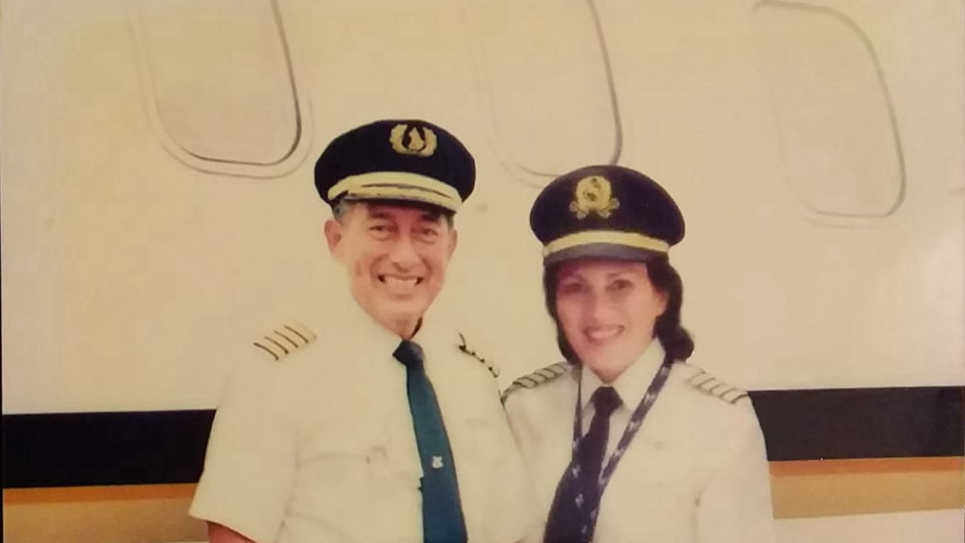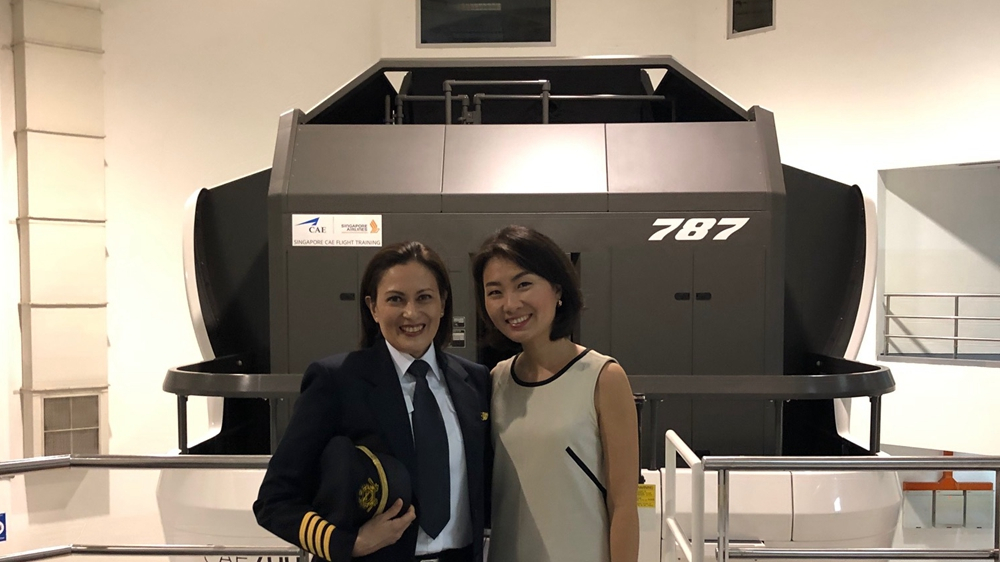
World
13:52, 08-Mar-2019
Reporter's journal: Girls who fly
Miro Lu

On the morning of my interview with SilkAir's longest-serving female pilot, Captain Vanessa Ess, I asked my children whether they had some questions for her.
My four-year-old boy innocently said, "Female pilots don't exist."
"Of course, they do!" his assertive elder sister shot back.
"Then how come I have never seen a female pilot?" he asked.
My boy had a point.
Statistics for the U.S. and the UK indicate that just four percent of all airline pilots are women. Their share is growing, but very slowly. According to the International Society of Women Airline Pilots, the largest three airlines in the U.S. also have the highest number of women pilots. On the Asian continent, the Indian low-cost carrier IndiGo can showcase the highest proportion of female pilots (13.9 percent). In Singapore, roughly four percent of SilkAir's 300 pilots are women.

Before becoming a pilot, Captain Vanessa Ess was a flight attendant Singapore Girl. /CGTN Photo
Before becoming a pilot, Captain Vanessa Ess was a flight attendant Singapore Girl. /CGTN Photo
Later that day, I asked Ess how she would explain the small percentage of female airline pilots.
She said that although nowadays all the paths were open for women to come forward, to educate themselves and take the sky, fewer women were exposed to this specific idea. Thus they might develop less interest in pursuing a career as an airline pilot.
"I don't think the small numbers have to do with gender per se," she said.
Ess's motivation for pursuing a career as a pilot was not fueled by equalizing the gender ratio, she explained. It was all about her love for the job.
Her passion for aviation started when she was young. Influenced by her father, a Singapore Airlines (SIA) pioneer pilot, when she was at the age of four, Ess told her parents that she wanted to fly. Pointing to a photo of herself and her father, commemorating her first flight and his last flight, she said it was "a natural tendency for me to follow in my father's footsteps."
However, back in the 1990s, only a few paths were open for women to become a cadet pilot. To fulfill her dream of flying, Ess became one of SIA's signature Singapore Girls. She showed me a photo of her dressed in the iconic Sarong Kebaya during her time as a flight attendant.
It was not until her late 20s that she became the first woman to make it into SilkAir's cadet pilot program. In 2003, she graduated as the first female pilot from the Singapore Flying College, eventually moving her way to the front of the airplane and into the cockpit.

Captain Vanessa Ess and CGTN Reporter Miro Lu pose for a photo in front of a Boeing 787 Simulator at the SIA Training Center. /CGTN Photo
Captain Vanessa Ess and CGTN Reporter Miro Lu pose for a photo in front of a Boeing 787 Simulator at the SIA Training Center. /CGTN Photo
Today, Ess is a veteran pilot. During her tenure of more than 18 years, she has been flying for more than 12,700 hours. She currently operates the Boeing 737 aircraft and is also part of the Ninety-Nines, an international organization for women pilots, aiming to provide support and mentorship for young, aspiring female pilots in the industry.
"What advice do you have for the little girls out there who want to be you?" I asked Ess.
"The sky is the limit. Do you want to do it? We are here to help you, and we are here to guide you. But live your dream. Really, live your dream. It can be done," she said.
During the interview, we talked about Captain Tammie Jo Shults, who gained worldwide acclaim last year as the heroine Southwest pilot who landed a severely damaged plane. Like Shults, Ess remembers how it felt to be the only girl surrounded by men. One of the biggest hurdles in becoming a pilot, back then, was that old Catch-22: A small ratio of female pilots means less visibility, which means that the numbers of women pilots remain low because women have few role models who could inspire them to become a pilot. Therefore, it was exhilarating to have Shults hailed as a heroine and a role model, Ess said.
I asked Ess whether she would prefer to be referred to as an excellent pilot, rather than an excellent female pilot. She shrugged it off, saying that she was very comfortable in her role now.
"These things don't particularly bother me very much, because I know my standards, I know what is required, I know I'm good at my job. Hopefully one day they will refer to us as just pilots."
At the end of the interview, I asked Ess to take a photo with me so I could show my son and my daughter that those female pilots do indeed exist.
(Top image: Captain Vanessa Ess and her father in a photoshopped picture, commemorating her first flight and his last flight. /CGTN Photo)

SITEMAP
Copyright © 2018 CGTN. Beijing ICP prepared NO.16065310-3
Copyright © 2018 CGTN. Beijing ICP prepared NO.16065310-3